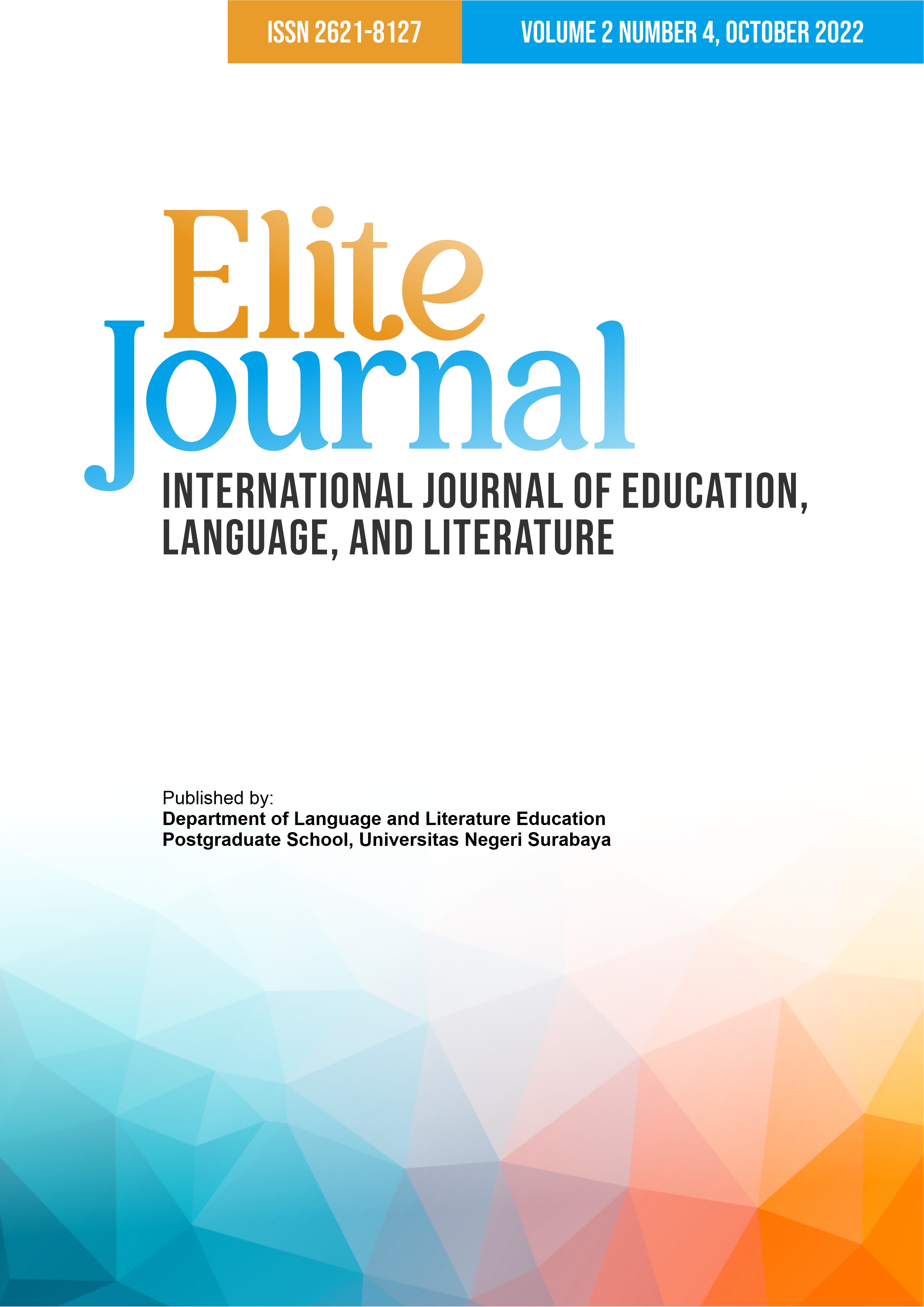LANGUAGE POLITENESS STRATEGY IN BUYING AND SELLING BASED ON GENDER
DOI:
https://doi.org/10.26740/elitejournal.v2n4.p228-234Keywords:
pragmatics, politeness strategy, genderAbstract
In buying and selling transactions process, sellers are required to provide the best service through polite speech to buyers. In that way, buyers will feel comfortable and valued with the services provided by the seller. Thus, this study purposes to explore the language politeness strategies contained in the speech between sellers and buyers by looking at the gender differences in Pasar Pagi, Bugis village, Samarinda. It focuses on the utterances delivered by sellers and buyers to find out how gender differences can affect politeness strategies in transactions in the market. This research employed a descriptive qualitative approach with recording and note-taking techniques for data collection. Meanwhile, Brown and Levinson’s theory is used to categorize data. The data are further analyzed in order to know the representation of language politeness strategies in speech acts in Pasar Pagi. Based on the analysis results, there are two language politeness strategies in the speech act of buying and selling at Pasar Pagi, namely bald on record and positive politeness. It can be said that sellers and buyers pay attention to language politeness strategies regardless of gender differences.
References
Bogdan dan Taylor. (1975) dalam J. Moleong, Lexy. (2017). Metodologi penelitian kualitatif. Bandung: Remadja Karya.
Brown, P., & Levinson, S. C. (1978). Universals in language usage: Politeness phenomena. In Questions and politeness: Strategies in social interaction (pp. 56-311). Cambridge University Press.
Ellen, Gino. (2006). Kritik teori kesantunan. Terjemahan oleh Abdul Syukur Ibrahim (Peny.). Surabaya: Airlangga University Press.
Kusumaswarih, K. K. (2018). Strategi kesantunan berbahasa dalam pembelajaran Bahasa Indonesia. Belajar Bahasa: Jurnal Ilmiah Program Studi Pendidikan Bahasa dan Sastra Indonesia, 3(2).
Leech, G. (1993). Prinsip-prinsip pragmatik. Terjemahan oleh MDD Oka. Jakarta: Penerbit Universitas Indonesia.
Minto, D. W., & Azwar, R. (2022). Strategi bertutur pemandu wisata di Kabupaten Pesisir Selatan Sumatera Barat. SOROT, 17(2), 77-89.
Prasetya, K. H., Subakti, H., & Musdolifah, A. (2022). Pelanggaran prinsip kesantunan berbahasa peserta didik terhadap guru Sekolah Dasar. Jurnal Basicedu, 6(1), 1019-1027.
Rahmi, R., & Tadjuddin, S. (2017). Strategi kesantunan positif dalam tindak tutur pada novel bidadari-bidadari surga karya Tere Liye. Bahtera: Jurnal Pendidikan Bahasa dan Sastra, 16(2), 56-77.
Rohmadi, M., & Sudhono, K. (2019). Kajian pragmatik (peran konteks sosial, dan budaya dalam tindak tutur di Pacitan). Surakarta: Yuma Pustaka.
Saputry, D. (2016). Strategi kesantunan positif dan negatif dalam bentuk tuturan direktif di lingkungan STKIP Muhammadiyah Pringsewu Lampung. Jurnal Pesona, 2(2).
Wijana, I. D. P. (1996). Dasar-dasar pragmatik. Yogyakarta: Andi.
Downloads
Published
How to Cite
Issue
Section
License
Copyright (c) 2022 Mikha Joys, Binti Nurkhasanah, Sindy Alicia Gunawan

This work is licensed under a Creative Commons Attribution 4.0 International License.
 Abstract views: 382
,
Abstract views: 382
, PDF Downloads: 483
PDF Downloads: 483





